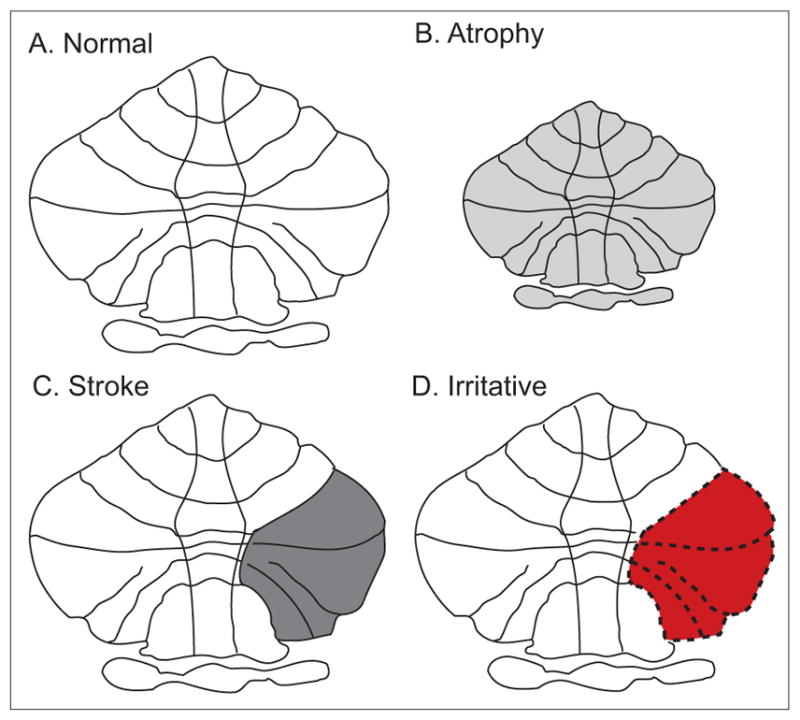Figure 2.

Different consequences of cerebellar lesions. Lesions of the cerebellum may cause different phenotypes depending on the nature of the lesion and its consequences. Normal cerebellar structure and output from the cerebellum result in normal patterns of movements (A). Decreased cerebellar output due to cerebellar atrophy (B) or stroke (C) may cause ataxia. In contrast, irritative lesions causing distorted cerebellar output (represented in red) may lead to dystonia (D).
